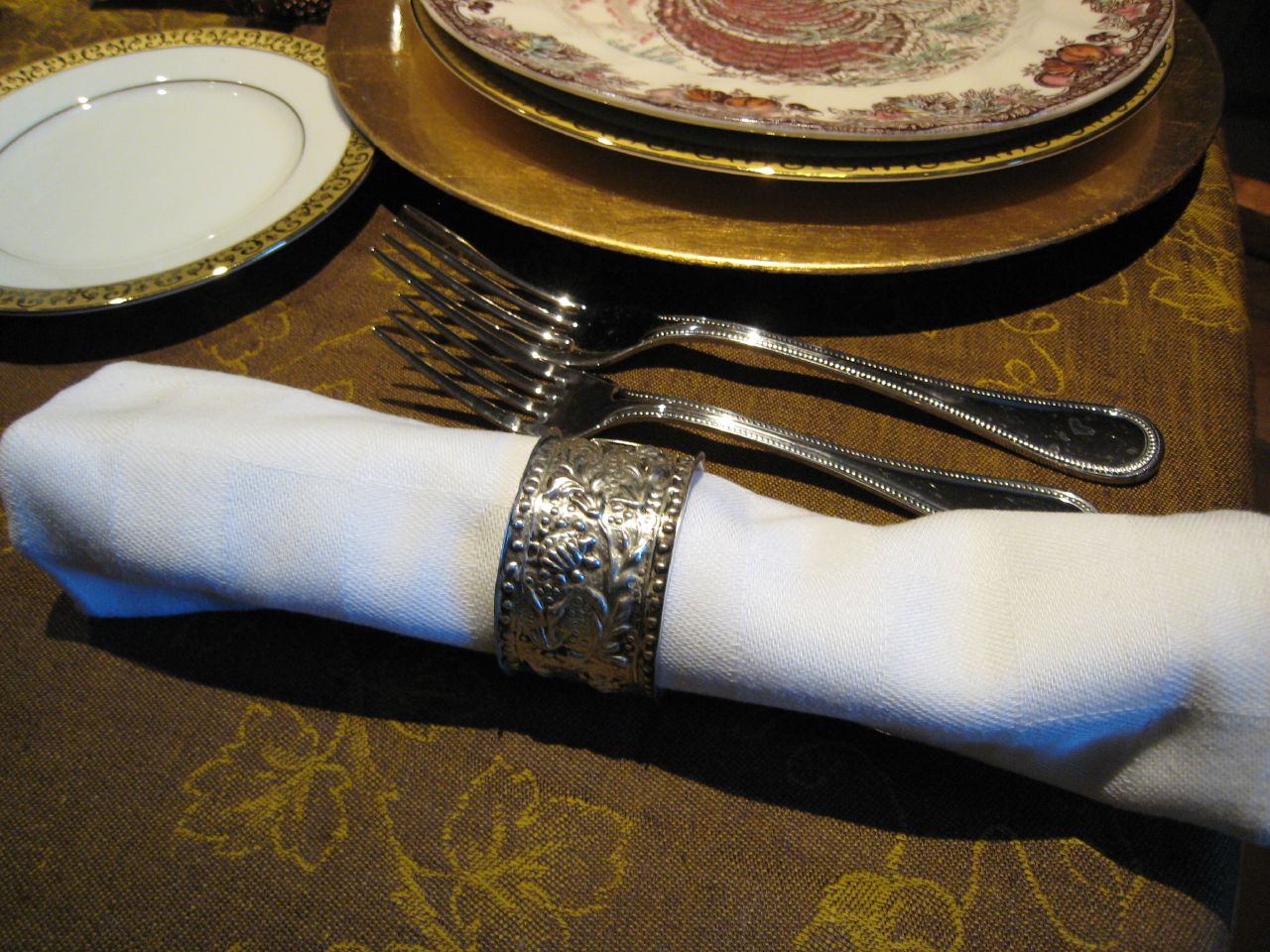Napkin Ring on:
[Wikipedia]
[Google]
[Amazon]
 The napkin ring, occasionally called a Christening bangle, was originally used to identify the
The napkin ring, occasionally called a Christening bangle, was originally used to identify the
 The napkin ring, occasionally called a Christening bangle, was originally used to identify the
The napkin ring, occasionally called a Christening bangle, was originally used to identify the napkin
A napkin, serviette or face towelette is a square of cloth or paper tissue used at the table for wiping the mouth and fingers while eating. It is also sometimes used as a bib by tucking it into a shirt collar. It is usually small and folded, s ...
s of a household between weekly wash days. The figural napkin ring is an American specialty in which the simple napkin ring is part of a small figure or sculpture that may take any shape and show any motif. Napkin rings appear as single items with the name or initials of the owner, notably given as christening presents, or pairs often given as gifts at weddings and silver weddings. In the English speaking countries, numbered sets of 4, 6, 8, 10 or 12 napkin rings are found. Napkin rings are an invention of the European bourgeoisie
The bourgeoisie ( , ) are a class of business owners, merchants and wealthy people, in general, which emerged in the Late Middle Ages, originally as a "middle class" between the peasantry and aristocracy. They are traditionally contrasted wi ...
, first appearing in France about 1800 and soon spreading to all countries in the western world. Most 19th century napkin rings were made of silver or silver plate, but others were made in bone, wood, pearl embroidery, porcelain, glass, and other materials. In the 20th century, bakelite
Bakelite ( ), formally , is a thermosetting polymer, thermosetting phenol formaldehyde resin, formed from a condensation reaction of phenol with formaldehyde. The first plastic made from synthetic components, it was developed by Belgian chemist ...
and other new materials were used.
References
* Silver, September–October 1980: Ole Lachmann, ''European Silver Napkin Rings'' * Ole Lachmann: "Napkin Rings – 150 years of silver design" * Victor Schnadig: ''American Victorian Figural Napkin Rings'' {{Authority control Serving and dining